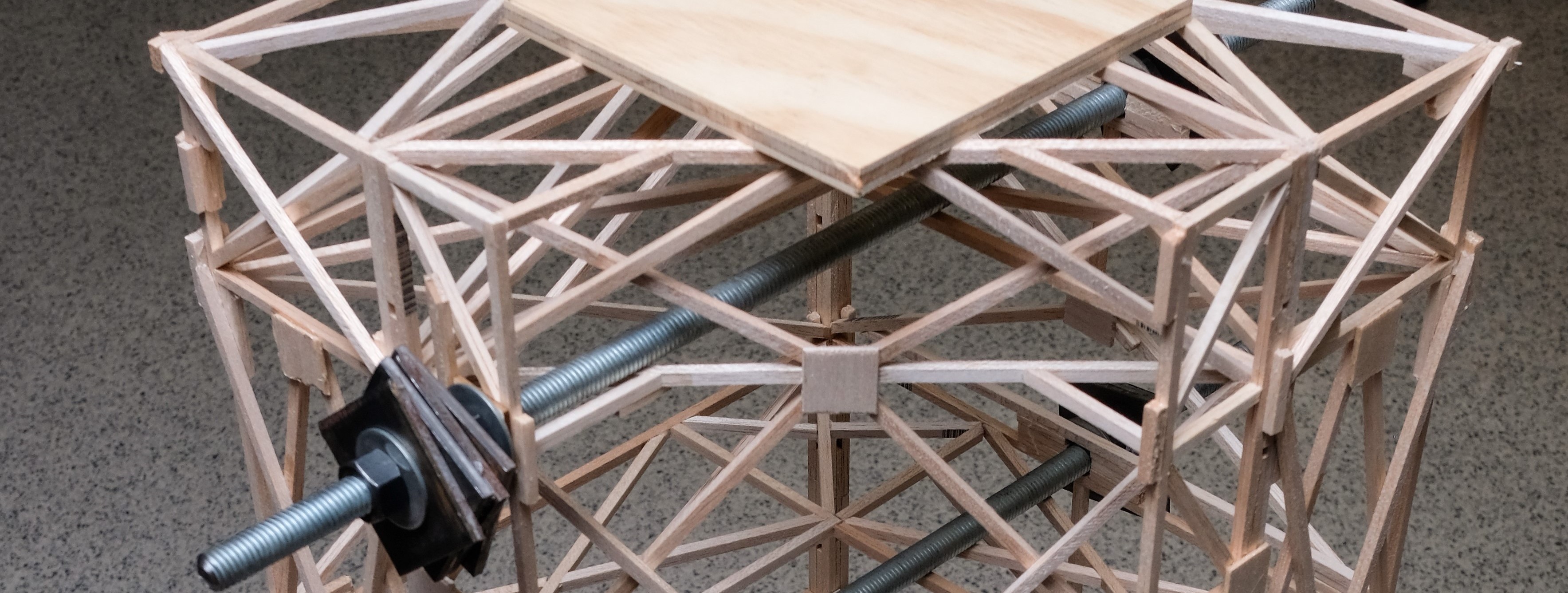2019-2020 UofT Seismic Design Team

The Junior Design and Analysis Lead role entails aiding the design and analysis team to come up with a design for a balsa wood tower that ensures the structure survives the given ground motions. This must be done while maximizing floor space (revenue) given the restrictions in the rules. The design must also minimize accelerations, displacements and tower weight. Here are some of the tasks and tools used to achieve this:
SAP2000 for Design and Analysis. During the 2019-2020 season, the team utilized SAP2000 as the structural analysis software. Using this the ideation towers can be produced considering the competition rules and given ground motions (GM1 and GM2). SAP2000 allows us to extract certain important parameters including roof accelerations, roof displacements, shear forces, axial forces, moments, total tower weight and tower period. These parameters allow the comparison of multiple towers to decide on which one to construct. Also, after conducting certain tests on the shake table the SAP models are fine-tuned to help with competition predictions (more on this below).
Python and MATLAB. These two tools that are taught in some first-year courses prove to be very useful for this team. Python was used to code Autobuilder and the hysteresis (for dampers) by other members of this team. Tweaking, implementing and running python code plays an important part during the design process. MATLAB code was used to analyze results (using Fourier transform) provided by the accelerometer after testing in order to find the tower period.
Autobuilder. Autobuilder helps the team produce hundreds of SAP2000 tower models automatically based on the brainstormed tower framework with differently bracing schemes and member thicknesses (changing variables are predetermined). Running this code and interpreting the results to help the team find the optimal tower out of the hundreds and thousands of models is an essential task.
Construction of the Tower. Once a tower has been chosen from the design and analysis, one of the next steps is to construct it (using contact cement, saws, balsa members etc.). Many members of the team from different roles part take in this construction process. The precision of the tower construction is ensured using a REVIT model (for visualization), jigs and supports.
Testing. Once the tower has been constructed it is tested to determine tower period (from white noise test), damping ratio (from free vibration test) and observe performance underground motions. This requires loading the tower with competition loads and setting it up on the shake table. After determining the tower period, the young’s modulus (E) is adjusted in the SAP2000 models to better match reality and aid in the predictions that are submitted for the competition.
Tower Progressions. Due to the variability of construction and the balsa wood material, it is necessary to come up with a technique to stiffen the tower if it falls into a suboptimal period (based on the produced spectrum). Looking at the spreadsheet of autobuillder results, the task is to find a progression of towers that achieves the stiffening while being feasible in terms of construction (make sure you don’t need to remove members one progression to the next).
Meetings and Presentations. Attending meetings is another responsibility of this role. Also, as a lead, presenting to sponsors or university guests about the team and design process is an important task. The following document was presented by my team and me to EERI (Earthquake Engineering Research Institute) members.